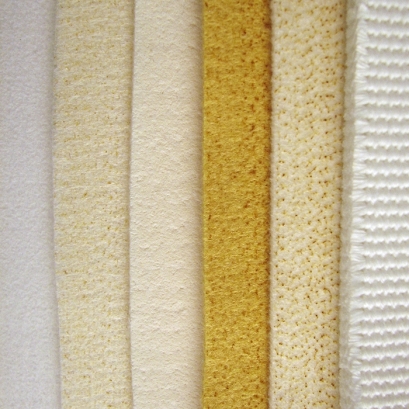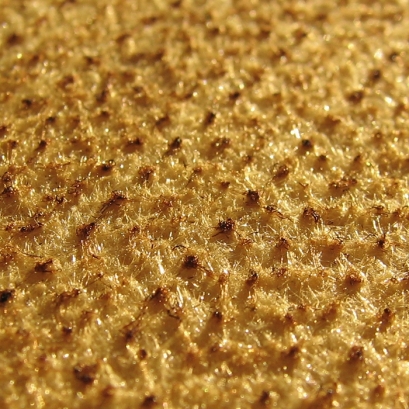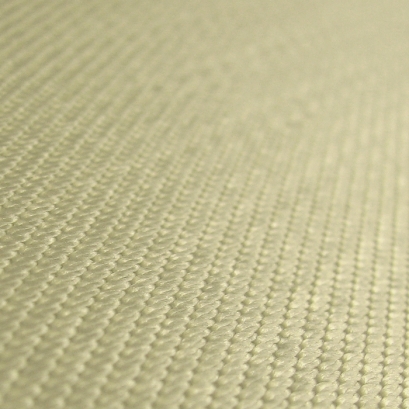Fabrics
Filter fabrics can be made of woven or nonwoven materials. Woven filters are generally used with liquid filtration and low cleaning energy gas filtration methods such as shaking and reverse-air. Felted fabrics are usually used with higher energy cleaning systems such as pulse-jet cleaning.
Woven Filters
Woven filters have open spaces around the fibers. The weave design used will depend on the intended application of the woven filter. The simplest weave is the plain weave. This weave is not frequently used, because the bags tend to have a high pressure drop (even without any dust cake).
Other weaves include the twill and sateen (satin). The twill weave does not retain particles as well as the plain weave, but does not tend to blind as fast. Bag blinding is a condition where the particles (dust) becomes embedded in the filter over time and are not removed by the bag cleaning process. The twill weave allows good flow rates through the filter and high resistance to abrasion. Satin weave does not retain particles as well as the plain twill weave, but has the best (easiest) cake release when the fabric is cleaned.
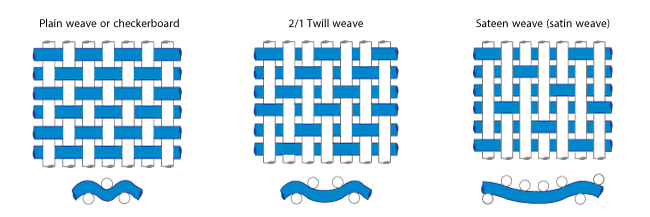
Felted Filters
Felted filters are made by needle punching fibers onto a woven backing called a scrim. The fibers are randomly placed as opposed to the definite repeated pattern of the woven filter. The felts are attached to the scrim by chemical, heat, resin, or stitch-bonding methods. To collect fine particles, the felted filters depend to a lesser degree on the initial dust deposits than do woven filters. The felted filters are generally 2 to 3 times thicker than woven filters. Each individual randomly oriented fiber acts as a target for particle capture by impaction and interception. Small particles can be collected on the outer surface of the filter.
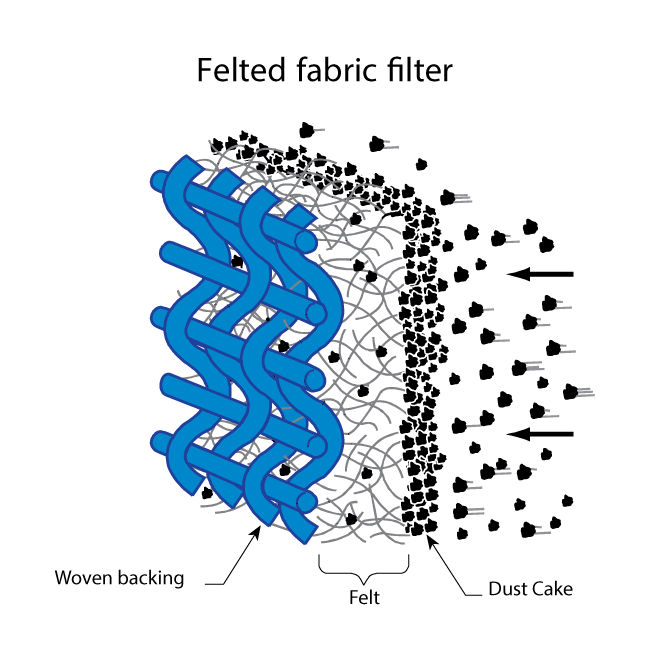
Woven Filters
Woven filters have open spaces around the fibers. The weave design used will depend on the intended application of the woven filter. The simplest weave is the plain weave. This weave is not frequently used, because the bags tend to have a high pressure drop (even without any dust cake).
Other weaves include the twill and sateen (satin). The twill weave does not retain particles as well as the plain weave, but does not tend to blind as fast. Bag blinding is a condition where the particles (dust) becomes embedded in the filter over time and are not removed by the bag cleaning process. The twill weave allows good flow rates through the filter and high resistance to abrasion. Satin weave does not retain particles as well as the plain twill weave, but has the best (easiest) cake release when the fabric is cleaned.

Felted Filters
Felted filters are made by needle punching fibers onto a woven backing called a scrim. The fibers are randomly placed as opposed to the definite repeated pattern of the woven filter. The felts are attached to the scrim by chemical, heat, resin, or stitch-bonding methods. To collect fine particles, the felted filters depend to a lesser degree on the initial dust deposits than do woven filters. The felted filters are generally 2 to 3 times thicker than woven filters. Each individual randomly oriented fiber acts as a target for particle capture by impaction and interception. Small particles can be collected on the outer surface of the filter.


